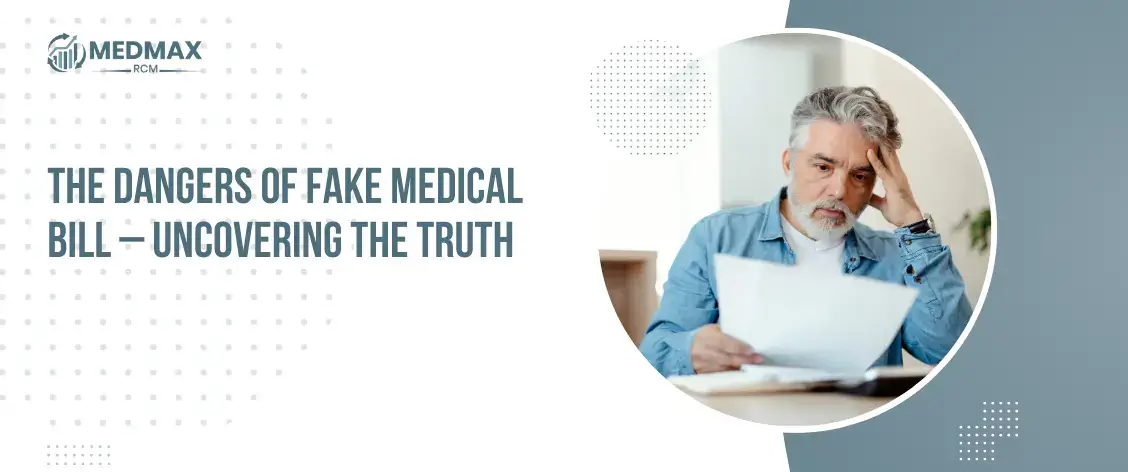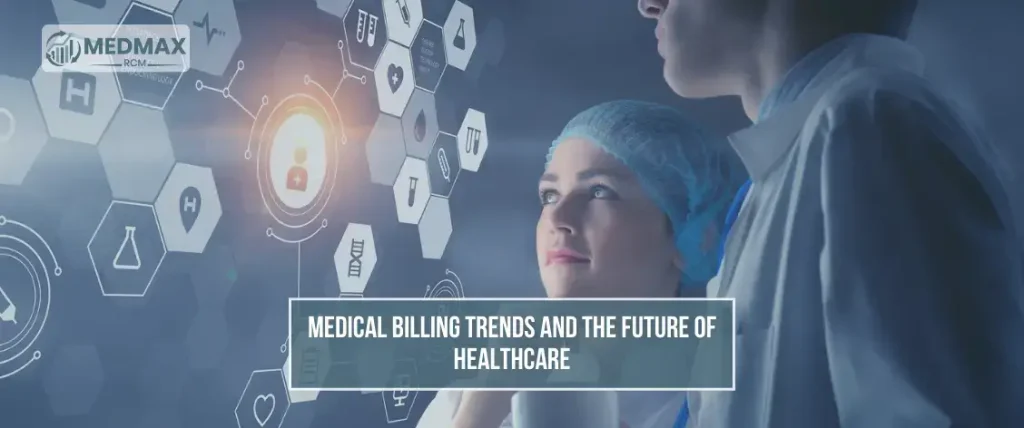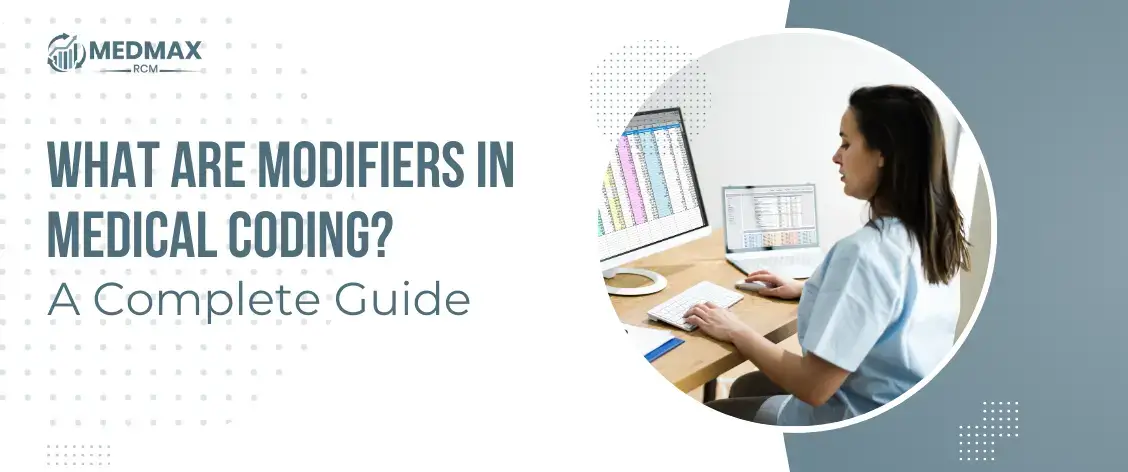RCM
Introduction to Revenue Cycle Management
Revenue cycle management (RCM) is the financial process that healthcare organizations use to track patient care and payment. It involves managing all aspects of the revenue process, from appointment scheduling and insurance verification to medical coding, billing, and payment collection. The importance of effective revenue cycle management cannot be overstated, as it directly impacts the financial stability and success of a healthcare organization.
What is Revenue Cycle Management?
Revenue cycle management is the financial process that healthcare organizations use to track patient care and payment. This process involves managing all aspects of the revenue process, including appointment scheduling, insurance verification, medical coding, billing, payment collection, and accounts receivable. The goal of RCM is to ensure that healthcare organizations receive payment for the services they provide in a timely and efficient manner.
Importance of Revenue Cycle Management
Effective revenue cycle management is critical for the financial stability and success of healthcare organizations. It helps to ensure that healthcare providers receive payment for the services they provide in a timely and efficient manner, and it also helps to improve the overall patient experience by streamlining the billing and payment process. Poor RCM can result in delays in payment, denied claims, and decreased revenue, which can significantly impact the financial stability of a healthcare organization.
Objectives of Revenue Cycle Management
The primary objectives of revenue cycle management are to increase revenue, improve financial stability, and enhance the patient experience. To achieve these goals, RCM focuses on improving the accuracy and efficiency of the billing and payment process, reducing delays in payment, and decreasing the number of denied claims. RCM also helps healthcare organizations to comply with regulatory requirements and reduce the risk of financial loss due to fraud or errors.
Key Players in Revenue Cycle Management
The key players in revenue cycle management include healthcare providers, billing and coding specialists, insurance companies, and patients. The healthcare providers are responsible for delivering patient care and generating the claims that are submitted for payment. Billing and coding specialists are responsible for ensuring the accuracy of the medical codes and claims submitted for payment. Insurance companies are responsible for verifying and processing claims, and patients are responsible for paying their share of the costs.
Revenue Cycle Management Process
The revenue cycle management process includes several key steps, including patient encounter and scheduling, insurance verification and authorization, medical coding and billing, payment posting, and accounts receivable. Each of these steps is critical to the overall success of the RCM process and requires the expertise and collaboration of all key players. To ensure the success of the RCM process, healthcare organizations must continually monitor and evaluate their processes to identify areas for improvement.
Patient Encounter and Scheduling
The first step in the revenue cycle management process is the patient encounter and scheduling. This involves scheduling appointments, verifying insurance coverage, and obtaining patient information. Accurate and complete patient information is essential for the success of the RCM process, as it helps to ensure that the correct insurance information is submitted with the claim and that the patient is responsible for the correct portion of the bill.
Insurance Verification and Authorization
The next step in the revenue cycle management process is insurance verification and authorization. This involves verifying the patient's insurance coverage, determining the patient's responsibility for payment, and obtaining any necessary authorizations. Proper insurance verification and authorization help to reduce the risk of denied claims and ensure that the healthcare organization receives payment for the services provided.
Medical Coding and Billing
Once the patient encounter and insurance verification have been completed, the next step in the Revenue Cycle Management (RCM) process is medical coding and billing. Medical coding specialists use standardized codes to accurately describe the medical services provided to the patient. This information is then used to generate a claim that is submitted to the insurance company for payment. Accurate medical coding and billing are critical to the success of the RCM process, as incorrect coding can result in denied claims and decreased revenue.
Payment Posting and Accounts Receivable
The final step in the revenue cycle management process is payment posting and accounts receivable. This involves posting payments received from insurance companies and patients to the appropriate accounts, and following up on any outstanding balances. Effective payment posting and accounts receivable management helps to ensure that healthcare organizations receive payment for the services they provide in a timely manner and reduce the risk of bad debt.
The Benefits of an Effective Revenue Cycle Management
RCM is a critical component of the healthcare industry, as it directly impacts the financial performance of healthcare organizations. An effective RCM process can help to improve financial performance, increase staff efficiency, enhance patient satisfaction, and improve data management. Here are the benefits of an effective revenue cycle management process and the common challenges that healthcare organizations face.
Improved Financial Performance
One of the key benefits of an effective revenue cycle management process is improved financial performance. With an efficient RCM process in place, healthcare organizations can reduce the risk of denied claims, reduce administrative costs, and increase the speed at which they receive payment for services provided. This leads to improved cash flow and bottom-line results, allowing healthcare organizations to invest in other areas of their business.
Increased Staff Efficiency
An effective revenue cycle management process also leads to increased staff efficiency. With streamlined workflows, automated processes, and accurate data entry, healthcare staff can focus on providing high-quality patient care, rather than being bogged down by administrative tasks. This not only leads to improved staff morale, but it also helps to reduce staff burnout and turnover.
Better Patient Satisfaction
Effective revenue cycle management can also have a positive impact on patient satisfaction. With improved patient communication and clearer billing processes, patients are more likely to have a positive experience with the healthcare organization. This can lead to increased patient loyalty and improved patient retention, as well as improved referral patterns.
Enhanced Data Management
An effective revenue cycle management process also leads to improved data management. With accurate and complete patient information, healthcare organizations can make informed decisions about patient care and improve their overall patient outcomes. Accurate data management also helps to reduce the risk of medical errors and improves the overall quality of care provided.
Common Challenges in Revenue Cycle Management
Despite the benefits of an effective revenue cycle management process, healthcare organizations still face a number of common challenges. These include:
Inadequate Staff Training
One of the biggest challenges in revenue cycle management is inadequate staff training. Without proper training, staff may not understand the importance of accurate data entry or may be unfamiliar with the latest medical coding and billing practices. This can lead to errors, decreased efficiency, and decreased revenue.
Inefficient Workflows
Another common challenge in revenue cycle management is inefficient workflows. In many cases, healthcare organizations have outdated or manual processes that are time-consuming and prone to errors. Improving workflows can help to reduce administrative costs, increase efficiency, and improve overall financial performance.
Inaccurate Data Entry
Inaccurate data entry is another major challenge in revenue cycle management. With incorrect patient information, healthcare organizations may not receive payment for services provided or may be at risk of denied claims. Improving data accuracy and completeness is essential for the success of the RCM process.
Limited Technology and Automation
Finally, limited technology and automation are common challenges in revenue cycle management. In many cases, healthcare organizations have outdated systems or limited automation capabilities, which can lead to decreased efficiency and increased administrative costs. Implementing new technology and automation can help to improve the Revenue Cycle Management (RCM) process and reduce the risk of errors.
Best Practices for Revenue Cycle Management
Develop a Comprehensive RCM
Plan One of the first steps in improving revenue cycle management is to develop a comprehensive Revenue Cycle Management (RCM) plan. This plan should outline the goals, processes, and strategies that the organization will use to manage the RCM process. This includes identifying areas for improvement, setting targets, and establishing KPIs to track progress.
Regularly Review and Update Policies and Procedures
Another best practice for revenue cycle management is to regularly review and update policies and procedures. This helps to ensure that the RCM process is in line with industry standards, remains efficient, and is up-to-date with the latest technology and automation.
Invest in Technology and Automation
Investing in technology and automation is another key best practice for revenue cycle management. This includes implementing systems for patient scheduling, insurance verification, medical coding and billing, and payment posting and accounts receivable. Automating these processes helps to increase efficiency, reduce errors, and improve the accuracy of data.
Implement Effective Training Programs
Effective training programs are also important for the success of revenue cycle management. This includes training for staff on the latest medical coding and billing practices, as well as training on the technology and systems used in the RCM process. This helps to reduce errors, improve staff efficiency, and increase the overall quality of the RCM process.
Revenue Cycle Management Metrics
Measuring the success of the revenue cycle management process is essential for making informed decisions about the RCM process. There are a number of metrics that healthcare organizations should track, including:
Key Performance Indicators (KPIs)
KPIs are critical metrics for tracking the success of the revenue cycle management process. This includes metrics such as denied claims, average days in accounts receivable, and payment accuracy. By tracking these KPIs, healthcare organizations can identify areas for improvement and make changes to improve their RCM process.
Benchmarking and Trend Analysis
Benchmarking and trend analysis are also important metrics for tracking the success of the revenue cycle management process. This involves comparing the organization's RCM performance against industry standards and trends and using this information to make improvements to the RCM process.
Performance Tracking and Reporting
Performance tracking and reporting are also essential for the success of the RCM process. This involves tracking the performance of the RCM process over time, including the accuracy of data, the speed of payment, and the overall efficiency of the process.
ROI Calculations
Finally, ROI calculations are critical for measuring the success of the revenue cycle management process. This involves calculating the return on investment for the RCM process, including the cost of technology and automation, the cost of staff training, and the return on investment in terms of improved financial performance and increased efficiency.
The Role of Technology in Revenue Cycle Management
Revenue cycle management (RCM) is a complex and ever-evolving process that requires the use of technology to achieve efficiency, accuracy, and profitability. In this section, we'll explore the role of technology in RCM and its impact on the revenue generation process.
Electronic Health Records (EHRs)
Electronic health records (EHRs) play a critical role in revenue cycle management as they provide healthcare providers with a comprehensive view of a patient's medical history. With EHRs, medical billing and coding professionals can quickly access patient information, making it easier to accurately code and bill for services rendered.
Medical Billing and Coding Software
Medical billing and coding software is an essential tool for revenue cycle management. It streamlines the billing and coding process, reducing the time and effort required to complete these tasks. With medical billing and coding software, healthcare providers can automate routine tasks, reduce errors, and improve the overall efficiency of their revenue cycle management process.
Patient Portal and Self-Service Tools
Patient portals and self-service tools provide patients with easy and secure access to their health information and billing information. With these tools, patients can view their bills, make payments, and manage their health records, freeing up staff time for more critical revenue cycle management tasks.
Automated Payment Posting and Denial Management
Automated payment posting and denial management tools streamline the payment and denial management process, reducing errors and improving the accuracy of revenue cycle management. With these tools, healthcare providers can automate payment posting and denial management, freeing up staff time for other critical revenue cycle management tasks.
Improving Claims Management and Denial Prevention
Revenue cycle management is directly impacted by the management of claims and the prevention of denials. In this section, we'll explore how technology can help improve claims management and denial prevention.
Understanding the Claims Process
Understanding the claims process is critical to improving claims management and denial prevention. With a clear understanding of the claims process, healthcare providers can take proactive measures to reduce the number of denied claims and improve the overall efficiency of the revenue cycle management process.
Identifying Common Denial Causes
Identifying common denial causes is key to improving claims management and denial prevention. By understanding the most common causes of denials, healthcare providers can take proactive measures to reduce the number of denied claims, improving the overall efficiency of the revenue cycle management process.
Implementing Denial Prevention Strategies
Implementing denial prevention strategies is a critical component of improving claims management and denial prevention. With the right denial prevention strategies in place, healthcare providers can reduce the number of denied claims, improving the overall efficiency and profitability of the revenue cycle management process.
Enhancing Claims Management through Technology
Technology plays a critical role in enhancing claims management and denial prevention. With the right technology in place, healthcare providers can automate the claims management process, reducing errors and improving the overall efficiency and profitability of the revenue cycle management process.
The Importance of Medical Coding and Billing
Medical coding and billing play a crucial role in the revenue cycle management of healthcare organizations. Accurate and efficient coding and billing processes ensure that healthcare providers receive proper reimbursement for the services they provide.
Understanding Medical Coding
Medical coding involves assigning standardized codes to medical diagnoses, procedures, and services. These codes are used for insurance claims, medical records, and statistical purposes. There are several coding systems, including ICD-10, CPT, and HCPCS, each with its own unique codes and requirements.
Importance of Accurate Medical Billing
Accurate medical billing is essential for ensuring that healthcare providers receive proper reimbursement for the services they provide. Inaccurate billing can result in denied claims, delayed payments, and decreased revenue. It is also important for maintaining good relationships with patients and insurance companies.
Common Billing Errors and Their Impact
Common billing errors include incorrect coding, missing or incorrect patient information, and incorrect insurance information. These errors can result in denied claims, delayed payments, and decreased revenue. They can also lead to increased administrative costs and decreased patient satisfaction.
Strategies for Improving Medical Coding and Billing
Improving medical coding and billing processes can help to increase revenue, reduce administrative costs, and improve patient satisfaction. Some strategies include regular staff training, investing in technology and automation, and implementing efficient workflows. Regular audits and quality assurance processes can also help to identify and resolve coding and billing errors.
Patient Financial Responsibility and Payment Collection
Patient financial responsibility refers to the portion of medical expenses that patients are responsible for paying. Understanding patient financial responsibility is important for implementing effective payment collection strategies and streamlining the payment collection process.
Understanding Patient Financial Responsibility
Patient financial responsibility can vary based on a patient's insurance coverage and the specific services they receive. It is important for healthcare providers to understand patient financial responsibility in order to accurately bill patients and receive proper reimbursement.
Implementing Effective Payment Collection Strategies
Effective payment collection strategies can help healthcare providers receive prompt payment for the services they provide. These strategies may include pre-authorization, pre-payment, and patient financing options. Automated payment posting and denial management systems can also help streamline the payment collection process.
Streamlining the Payment Collection Process
Streamlining the payment collection process can help healthcare providers receive prompt payment for the services they provide and improve patient satisfaction. Automated payment posting and denial management systems can help to automate and streamline the payment collection process, reducing administrative costs and increasing revenue.
Improving Patient Communication and Education
Improving patient communication and education can help healthcare providers increase patient satisfaction and ensure prompt payment for the services they provide. Providing clear and concise information about patient financial responsibility, payment options, and the payment collection process can help to improve patient understanding and reduce the risk of billing errors.
Accounts Receivable Management
Understanding Accounts Receivable Revenue cycle management (RCM) includes the process of tracking, collecting, and managing payments from patients, insurance companies, and other sources. Accounts receivable (AR) is a critical component of RCM and refers to the outstanding amounts that a healthcare organization is owed for services provided.
Strategies for Improving Accounts Receivable
To optimize their AR, healthcare organizations should focus on reducing their average accounts receivable days, improving their collections rate, and increasing the accuracy and efficiency of their billing and payment processes. Some strategies that can help improve AR include implementing automated payment solutions, regularly monitoring and reporting on accounts receivable, and optimizing payment collection processes.
Implementing Automated Accounts Receivable Solutions
One of the most effective ways to improve accounts receivable is to implement automated solutions that streamline the payment collection process. Automated accounts receivable solutions can help reduce manual errors, improve efficiency, and provide real-time visibility into outstanding balances, payment history, and other key metrics.
Regularly Monitoring and Reporting on Accounts Receivable
To ensure the ongoing success of their AR management efforts, healthcare organizations should regularly monitor and report on their accounts receivable. This includes tracking key performance indicators (KPIs) such as average accounts receivable days, payment collections rate, and denial rate, and analyzing trends to identify areas for improvement.
Compliance and Regulatory Requirements in Revenue Cycle Management
Understanding HIPAA and Other Regulatory Requirements
Revenue cycle management (RCM) is subject to a number of regulatory requirements, including HIPAA and other privacy and security laws. These laws are designed to protect patient information and ensure that healthcare organizations are handling personal and financial data in a secure and compliant manner.
Ensuring Compliance in RCM Processes
To ensure compliance with these regulations, healthcare organizations must implement robust policies, procedures, and technology solutions to secure and manage patient data. This includes using encrypted communication and storage, regularly monitoring and reporting on compliance activities, and conducting periodic risk assessments.
Implementing Compliance Monitoring and Reporting
Regular monitoring and reporting on compliance activities is a critical component of ensuring regulatory compliance in revenue cycle management. This includes tracking key metrics such as data breaches, HIPAA violations, and other regulatory incidents, and analyzing trends to identify areas for improvement.
Staying Up to Date with Regulatory Changes
Finally, healthcare organizations must stay up-to-date with changing regulations and adapt their RCM processes accordingly. This requires regular training and education, as well as investing in technology solutions that are designed to meet the evolving needs of the healthcare industry.
The Impact of Insurance Contracts on Revenue Cycle Management
Understanding Insurance Contracts: A key aspect of revenue cycle management is understanding the terms and conditions of insurance contracts. It is important to have a clear understanding of what services are covered and what the reimbursement rate is for each service.
Managing Insurance Contracts
Once you understand the terms of the insurance contract, it is important to manage it effectively. This includes regularly reviewing the contract, negotiating new terms, and renewing the contract as necessary.
The Impact of Insurance Contracts on RCM Metrics
Insurance contracts play a critical role in determining the financial health of a healthcare organization. An effective contract management system can result in improved RCM metrics such as higher reimbursement rates, reduced denial rates, and improved collections.
Negotiating and Renewing Insurance Contracts
Negotiating and renewing insurance contracts is a critical part of revenue cycle management. It is important to understand the negotiation process, identify key negotiation points, and have a clear strategy in place for renewing contracts.
Revenue Cycle Management for Specialty Practices
Specialty practices face unique challenges in managing their revenue cycle compared to general medical practices. Understanding these challenges is crucial to implementing effective revenue cycle management (RCM) solutions.
Implementing Effective RCM Solutions for Specialty Practices
One way to improve RCM in specialty practices is by hiring or training a Certified Professional Coder (CPC). CPCs are trained professionals who are well-versed in medical billing and coding practices, including those specific to specialty practices. They can help to ensure accurate coding and billing, leading to better financial performance.
Strategies for Improving RCM for Specialty Practices
Other strategies for improving RCM in specialty practices include regularly reviewing and updating RCM processes, investing in technology and automation, and implementing effective training programs for staff. Regular monitoring of RCM metrics can also help to identify areas for improvement.
Best Practices for RCM in Specialty Practices
Some best practices for RCM in specialty practices include developing a comprehensive RCM plan, implementing automated accounts receivable solutions, and regularly monitoring and reporting on RCM metrics. Staying up-to-date with regulatory changes and ensuring compliance with HIPAA and other regulatory requirements is also important for maintaining effective RCM in specialty practices.
Revenue Cycle Management for Rural Health Care
Introduction Revenue Cycle Management (RCM) plays a crucial role in the financial success of rural healthcare providers. With unique challenges faced by rural healthcare providers, it becomes essential to implement effective RCM solutions.
Understanding the Challenges of RCM for Rural Health Care
Rural healthcare providers face several challenges, including limited resources, lower patient volumes, and reimbursement complexities, which make RCM a complex process.
Implementing Effective RCM Solutions for Rural Health Care Certified Professional Coders can play an essential role in implementing effective RCM solutions. They can provide accurate medical coding, improve billing processes, and streamline payment collections.
Strategies for Improving RCM for Rural Health Care
Implementing automation and technology solutions, such as Electronic Health Records (EHRs) and medical billing software, can greatly improve RCM in rural health care. Regularly reviewing and updating policies and procedures can also help to improve RCM.
Best Practices for RCM in Rural Health Care
Regular training and upskilling of staff, including Certified Professional Coders, can improve RCM in rural health care. Implementing a comprehensive RCM plan, regularly monitoring and reporting on Accounts Receivable, and ensuring compliance with regulations can also contribute to better RCM.
The Future of Revenue Cycle Management
As the healthcare industry continues to evolve, RCM will also undergo significant changes. Artificial Intelligence (AI) is expected to play an increasingly important role in RCM, with predictions for improved accuracy, efficiency, and cost-effectiveness.
Emerging Trends and Innovations
The healthcare industry is constantly evolving, and revenue cycle management is no exception. In recent years, a number of new trends and innovations have emerged that are poised to shape the future of RCM.
The Impact of Artificial Intelligence (AI)
One of the biggest trends in RCM is the growing use of artificial intelligence (AI) technologies. AI-powered tools can automate various RCM processes, reducing errors, improving efficiency, and increasing financial performance.
Predictions for the Future of RCM
As AI and other technologies continue to advance, it is likely that the role of RCM will become increasingly automated and data-driven. RCM will become more efficient, streamlined, and effective, enabling healthcare organizations to maximize their revenue potential.
Preparing for the Future of RCM Certified Professional
Coders can play a key role in preparing for the future of RCM by staying up-to-date on the latest trends and innovations. By investing in ongoing training and professional development, Certified Professional Coders can ensure that they have the knowledge and skills they need to succeed in an ever-changing RCM landscape.
Case Studies of Effective Revenue Cycle Management
Success Stories from Various Healthcare Organizations showcase the importance of having a trained and certified professional coder as part of the revenue cycle management team.
Impact of RCM on Financial Performance
It highlights the positive impact of having a coder with the Certified Professional Coder (CPC) designation, who can ensure accurate coding and billing.
Lessons Learned from RCM Case Studies demonstrate the significance of investing in a professional coder, who can play a crucial role in the success of the revenue cycle management process. Best Practices from RCM Case Studies show that having a CPC on the team can provide an edge in maximizing revenue and reducing denied claims.
Wrap Up!
The Importance of Revenue Cycle Management is evident in the role played by a Certified Professional Coder in the success of the process. The Benefits of Effective RCM are numerous and include increased financial performance and reduced denied claims, both of which are directly related to the skills and expertise of a CPC. The Future of RCM holds great promise with the continued integration of technology, and the ongoing need for highly trained and certified professionals like CPCs. Encouragement to Continuously Improve RCM Strategies and Processes highlights the importance of investing in and developing a team of professional coders to meet the challenges and opportunities of the future.










